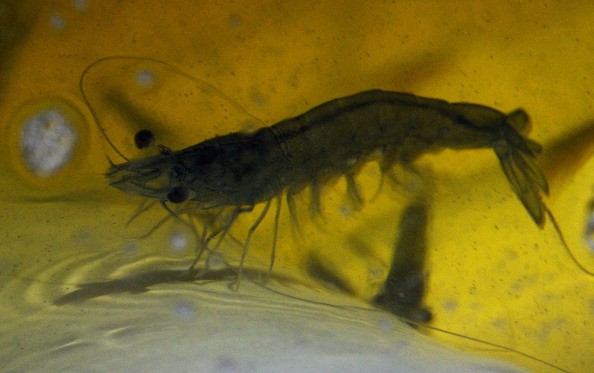Mantis shrimp swing a spring-loaded appendage that punches through water with intense force - and their babies can begin swinging just about nine days after they hatch.

Larval Philippine Mantis Shrimp
In a recent study, released Thursday the 29th of April in the Journal of Experimental Biology, experts studied larval Philippine mantis shrimp - Gonodactylaceus falcatus gotten originally from Oahu, Hawaii.
The team also nurtured some of the similar species from eggs, carefully observing their development through time and then magnifying their punching appendage with the use of a microscope.
The appendage, known as the raptorial appendage, works the same way a bow and arrow works, in that the tip of the appendage gets drawn back, "nocked" against a mechanism that is spring-like, and then let loose in a quick elastic energy release, said a graduate student in the biology program at Duke University, first author Jacob Harrison.
"While we have a quite large knowledge of its functioning in the adults ... we didn't actually have a solid knowledge of the development," Harrison told Live Science.
Also Read : Coconut Oil: A Potent, Safe Insect Repellent
Mystery of Punching Mantis Shrimp
Now, in a study that was "remarkably finalized and meticulously controlled," Harrison and his colleagues have begun to unwind the mystery of when mantis shrimp began to throw down just like lightning-fast boxers, said a professor of integrative biology at the University of California, Berkeley, Roy Caldwell, who was not part of the study.
Additionally, since larval mantis shrimp possess transparent shells, "what is unique about this study is that the raptorial apparatus transparency permits them to view in great detail precisely what's happening," Caldwell said. He added: "That has not been achievable in staring at adults," that has an opaque exoskeleton.
When grown-up mantis shrimp release a flurry of strikes, the tips of their appendages can pass through the water at approximately 80 km/h (50 mph), as stated by National Geographic. But a mathematical model, that was released in 2018 in the journal Sciene, gave a hint that baby mantis shrimp might throw punches that are even faster than adults, supposing they take up boxing at a tender age.

Mechanisms Used All Over Biology
This model, made in Harrison's working lab, magnified the spring mechanism mantis shrimp use to throw punishing blows. "We see the mechanisms used all over biology," from jumping insects and frogs to stinging jellyfish that release capsules filled with venom into their prey, Harrison noted.
The model gave a hint that these spring-loaded mechanisms should become less efficient at increased scales in general, and therefore, springs that are smaller with less mass should produce higher acceleration when freed. Another model that specially focused on mantis shrimp showed a similar result, implying that mantis shrimp species that are large strike more slowly than smaller species, the researchers made a report in 2016 in the Journal of Experimental Biology.
Related Article : Praying Mantis: Re-Evolution Of Disruptive Camouflage Revealed In Horned Praying Mantise
For more news, updates about mantis shrimps and similar topics don't forget to follow Nature World News!
© 2025 NatureWorldNews.com All rights reserved. Do not reproduce without permission.





